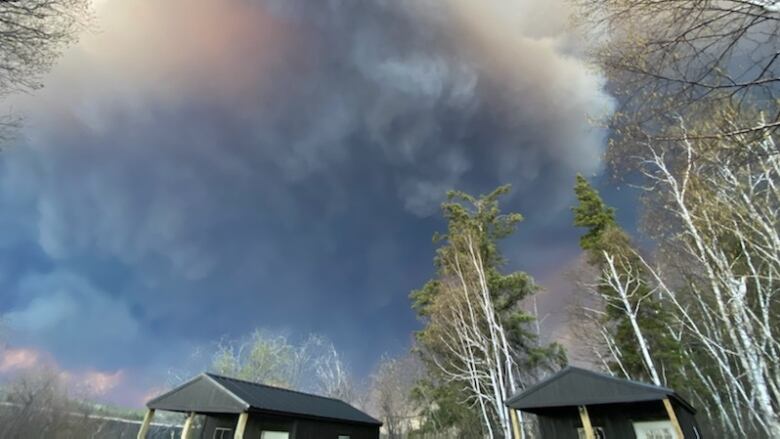Wildfires force more Manitoba First Nations to begin evacuations in Interlake region
Little Saskatchewan, Pinaymootang, Skownan and Dauphin River First Nations now affected

Fires burning in Manitoba's Interlake region have forced four more First Nations to begin evacuations, sending vulnerable community members to hotels in Winnipeg and Dauphin.
"At this point it's primarily the people with the highest health concerns seniors as well as young children," said Jason Small, a spokesperson for the Canadian Red Cross, which the federal government called in to support the communities.
The latest First Nations to begin moving people out of the area are Little Saskatchewan, Pinaymootang, Skownan and Dauphin River.
Evacuees sent to Winnipeg, Dauphin
Community members from most of the communities will stay in hotels in Winnipeg, except for those from Skownan, who went to Dauphin, Small said.
Lake St. Martin First Nation announced Wednesday night that it was sending seniors, infantsand those with chronic illnesses to Winnipeg.
The evacuations involved moving around 750 people out of the area.
Lake St. Martin First Nation resident Kim Letanderwas among the evacuees. Sheleft the community around 9:30 p.m. Wednesday because of thick smoke andarrived in Winnipeg around 2 a.m. Thursday.
Letanderhas asthma and found it hard to breathe even indoors becauseof the smoke. Therewas so much ash, she said, it looked like it was snowing. On the drive to Winnipeg, her eyes were tearing up because the smoke was stinging them, she said.
"I was scared. My son and I were both scared driving, because we didn't know what to expect," she said.
Letander said shehad to fight to stay awakeand be extra vigilant for animals on the road that may be escaping from the fire as well.
She hasn't heard when evacuees may be able to return home, but says she hopes they can return soon.
Earlier this week, Misipawistik Cree Nation near Grand Rapids, Man., sent community members from about 80 households to Grand Rapids and Thompson after a grass fire destroyed two homes.
Small didn't know how long people might have to stay in hotels before they would be able tosafely return to their homes.
"Right now, we're just going to start getting everybody registered and make sure they get everything they need," he said.

Air quality warnings issued
The largest fire in the area is near Homebrook, a community north of Lake Manitoba that's about 240 kilometres northwest of Winnipeg.
The blaze was 144,000 hectares, more than 80 kilometres long and approximately 16 kilometresat its widest point, the provincial government said Wednesday afternoon.
The province's wildfire service has issued air quality warnings for central and southern Manitoba and several highways have been shut down due to smoke.
CBC Manitoba meteorologist John Sauder forecasts some scattered showers throughout the province on Thursday and Friday, although it's difficult to predict how much precipitation will actually fall and where.
With files from Meaghan Ketcheson and Jill Coubrough













_(720p).jpg)


 OFFICIAL HD MUSIC VIDEO.jpg)
.jpg)



























































































